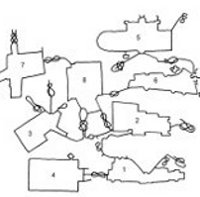Urban Spaces and Safety
DOI:
https://doi.org/10.6092/1970-9870/775Keywords:
Vulnerability, Relational spaces, SafetyAbstract
The concept of vulnerability understood in the traditional sense as a “single manufactured good” is insufficient when it comes to describing the real conditions of an urban system’s vulnerability within which an indefinite variable of factors interact with one another thereby determining the damage caused by an earthquake. These interacting factors constitute so-called “urban vulnerability” which town planners use in order to contribute to the field in the form of analysis definition and interventions in the mitigation of seismic risk on an urban scale.
The research paper “Relational Spaces as Safe Places” positions itself firmly in the vein of town planning research which focuses on the mitigation of seismic risk, and which intends to blaze a new methodological trail that aims to identify safety traits in urban spaces. The research paper’s starting point is the assumption that empty urban spaces, given the indications provided by the principal organs for Civic Protection, have come to be seen as the spaces designed to accommodate the public in cases of emergency. This can generate new thought regarding town planning by reviewing early post-earthquake urban designs where the rules were laid out for earthquake-proof cities: a “chessboard” plan with wide streets, both straight and perpendicular, empty spaces like squares and markets positioned along the longitudinal streets, and buildings with regular layouts all at right-angles. These simple guidelines, which are often disregarded and distorted in modern towns, are extraordinarily relevant and oriented towards new definitions of the urban traits of quality and security.Downloads
References
AA.VV. (1997) “Il metodo augustus periodico informativo della protezione civile”, DPC Informa, 12, maggio – giugno, Roma.
Baratta M. (1910) La catastrofe sismica calabro-messinese, Società Geografica Italiana, Roma.
Benerjee T. (1981) “Alcune osservazione sui terremoti: la vulnerabilità nelle zone urbane e il disegno urbano”, CNR-Nsf, Us-Italy Workshop on Earthquake Disaster Mitigation, Roma.
Cremonini I. (ed.) (1994) Rischio sismico e pianificazione nei centri storici, Alinea, Firenze.
De Paoli R.G. (2001) “Il Piano di recupero del centro storico di Rosarno”, in W. Fabietti (ed.) Linee Guida per la riduzione urbanistica del rischio sismico. Il recupero dei centri storici di Rosarno e Melicucco, INU Edizioni, Roma.
Fabietti W. (1999) Vulnerabilità e trasformazione dello spazio urbano, Alinea, Firenze.
Fera G. (1991) La città antisismica, Gangemi, Roma.
Fera G. (2002) “La salvaguardia dei centri storici nelle aree ad elevato rischio sismico”, in XXII Conferenza Italiana di Scienze Regionali, Reggio Calabria.
Galderisi A. (2004) Città e terremoti, Gangemi, Roma.
Imbesi G. (1991) “La riduzione del rischio sismico ed il piano urbanistico”, in M.F. Battisti (ed.), La città e l’emergenza, FrancoAngeli, Milano.
Mc Harg J. (1989) Progettare con la natura, Muzzio, Padova.
Principe I. (1985) 1783. Il Progetto della forma; la ricostruzione della Calabria negli archivi di Cassa Sacra a Catanzaro e Napoli, Gangemi, Roma.
Vivenzio G. (1783) Istoria e teoria dei tremuoti in generale e in particolare di quelli della Calabria e di Messina del 1783, Stamperia Reale, Napoli.

Downloads
Published
How to Cite
Issue
Section
License
Authors who publish in this journal agree to the following:
1. Authors retain the rights to their work and give in to the journal the right of first publication of the work simultaneously licensed under a Creative Commons License - Attribution that allows others to share the work indicating the authorship and the initial publication in this journal.
2. Authors can adhere to other agreements of non-exclusive license for the distribution of the published version of the work (ex. To deposit it in an institutional repository or to publish it in a monography), provided to indicate that the document was first published in this journal.
3. Authors can distribute their work online (ex. In institutional repositories or in their website) prior to and during the submission process, as it can lead to productive exchanges and it can increase the quotations of the published work (See The Effect of Open Access)

